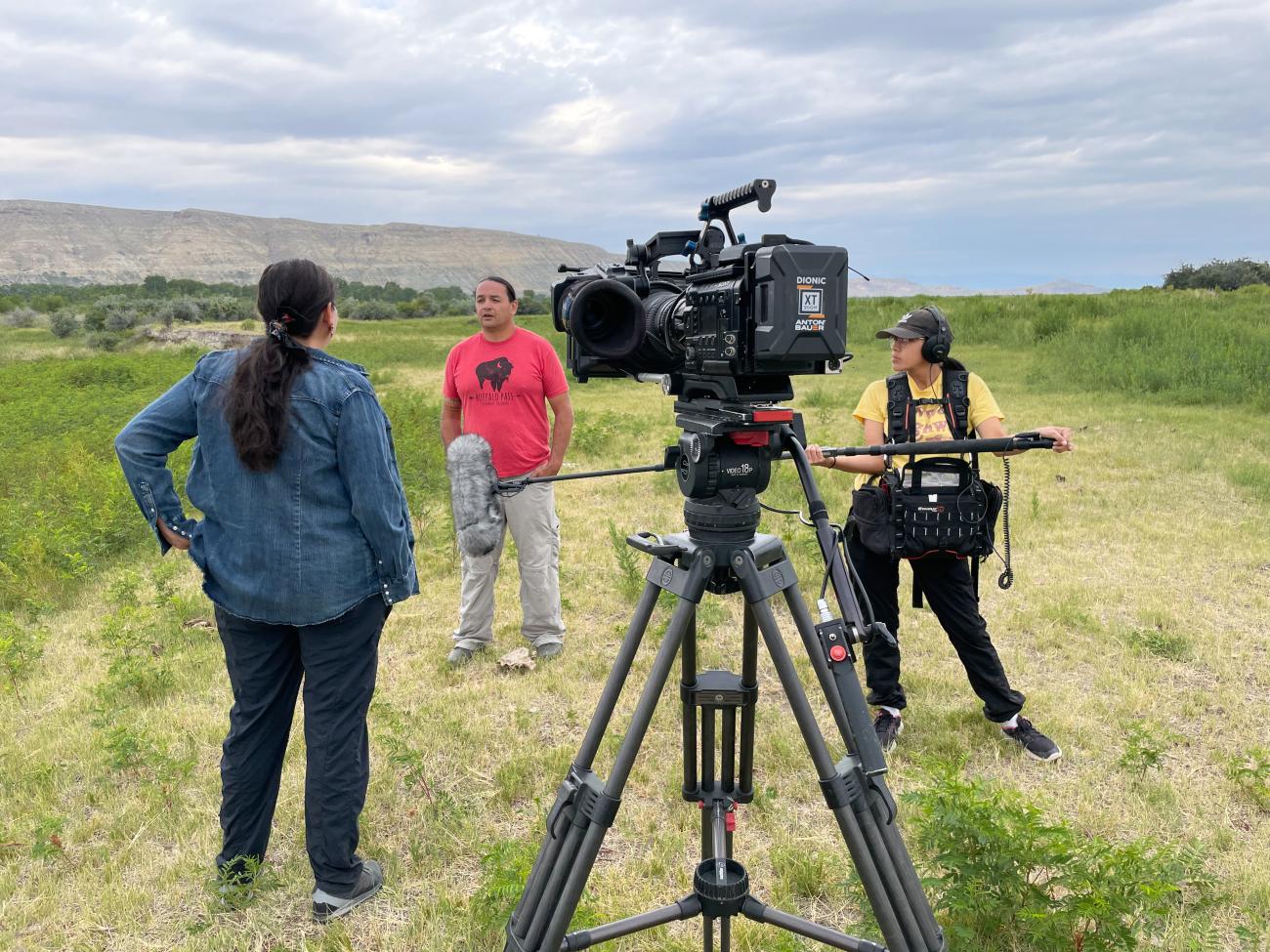
By Cristina Verán
The work of award-winning filmmaker and scholar Tasha Hubbard (Cree/ Peepeekisis First Nation) has explored both deeply personal as well as broader, more systemic narratives—from the trauma of forced family separation and police brutality to more optimistic and buoyant themes like the endurance of cultural memory and its importance to Indigenous survivance. For her latest documentary, “Singing Back the Buffalo”—which has opened for major film festivals this year from Mother Tongue at the Smithsonian to ImagineNative (where Hubbard won the Documentary Feature Award, in honor of Alanis Obamsawin,) among others—she turned her lens toward a joyful resurgence now underway across the Plains of North America, bringing light in doing so to the enduring and deeply-held kinship between the region’s Indigenous Peoples and those whom they understand as its buffalo people.
In conversation with Cristina Verán, Hubbard reflected on the film’s genesis, which arose from family and community histories and a childhood vision transformed from a dream to the screen. Undergirding it all lies a commitment to advocacy and a passion for academic research in service thereof, as foundational to all her endeavors.
CV: What should readers understand about the centrality of the buffalo in this film, for the land and for the people—which is to say, your Peoples?
TH: For us as Cree, the buffalo are not just animals; they are our grandparents. We see them as our relatives, who have cared for us throughout time; like Elders care for children. This kinship is foundational, reciprocal, and symbiotic. Contrary to the colonial narrative—which has viewed them mainly as just a resource for extraction—our relationship to the buffalo is grounded in the idea of family. Their loss, for us, was not just, “Oh, we lost our food source, we lost our livelihood.” We did lose those things, yes, but it was much more than that.
As for the land, the buffalo transform it for the better. Their wallowing, for example, creates dust bowls that collect rainwater, forming micro-ecosystems. And they shape the prairie in other ways that we’re only beginning to re-understand. These relationships ripple outward, benefitting many species in fact; humans just one among them.
CV: You’ve engaged in buffalo-related activism and restoration activities for some time. Please share a bit about those experiences.
TH: I became involved back in 2015, reporting on the Buffalo Treaty and also working with community to start the International Buffalo Relations Institute (where I am the current Board Vice President.) Throughout, I’ve spent a lot of time traveling to buffalo gatherings, treaty meetings, and connecting with other Indigenous Peoples to learn from their nations and communities about these issues.
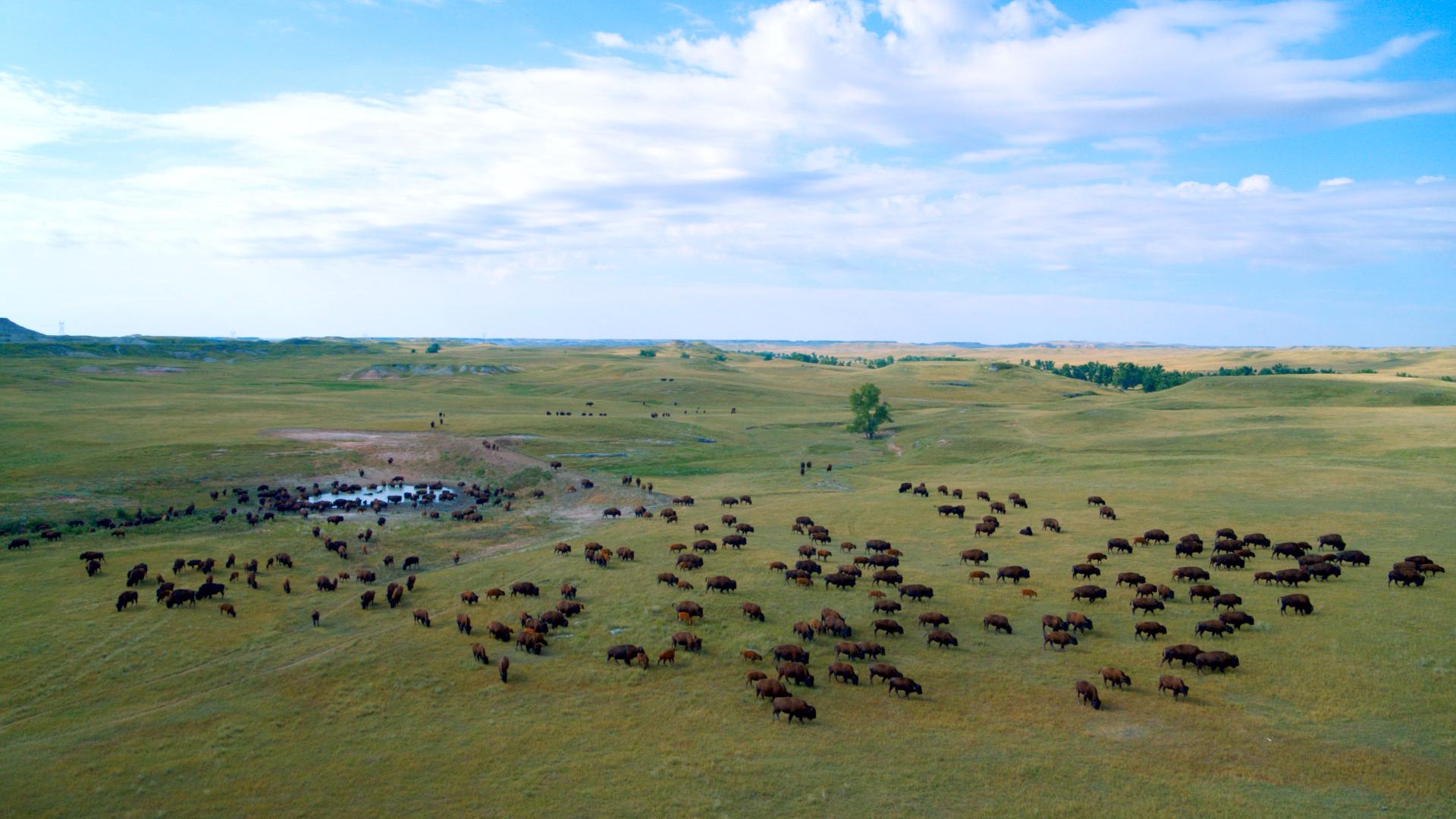
Production still from "Singing Back the Buffalo.” Photo by George Hupka.
CV: The buffalo’s drastic, human-orchestrated decline is something you believe should be recognized as a genocide. How did you come to this understanding?
TH: I make this argument because, to an Indigenous understanding, human beings aren't the only “people”—other beings from this land also have peoplehood. At the time of first-contact with Europeans, the buffalo population went from something like 50 million, perhaps even 70 or 100 million alive, to near-extinction. I looked to the work of Raphael Lemkin (the Polish lawyer, scholar, and Holocaust survivor who first coined the word genocide) and how it defined “the destruction of a people”—through actions such as removing them from their lands and territories and taking away their children. This scenario, I realized, was comparable to what I’d read in a bunch of old hunter diaries about the slaughter of buffalo; what they did to them in that process: denying them water, separating calves from their mothers, and so on; all about disruption, destruction.
Today, fortunately, they are re-entering people’s imaginations. And with that, we can start to dream again about herds big enough to enable them to fulfill their role in ecological and spiritual renewal.
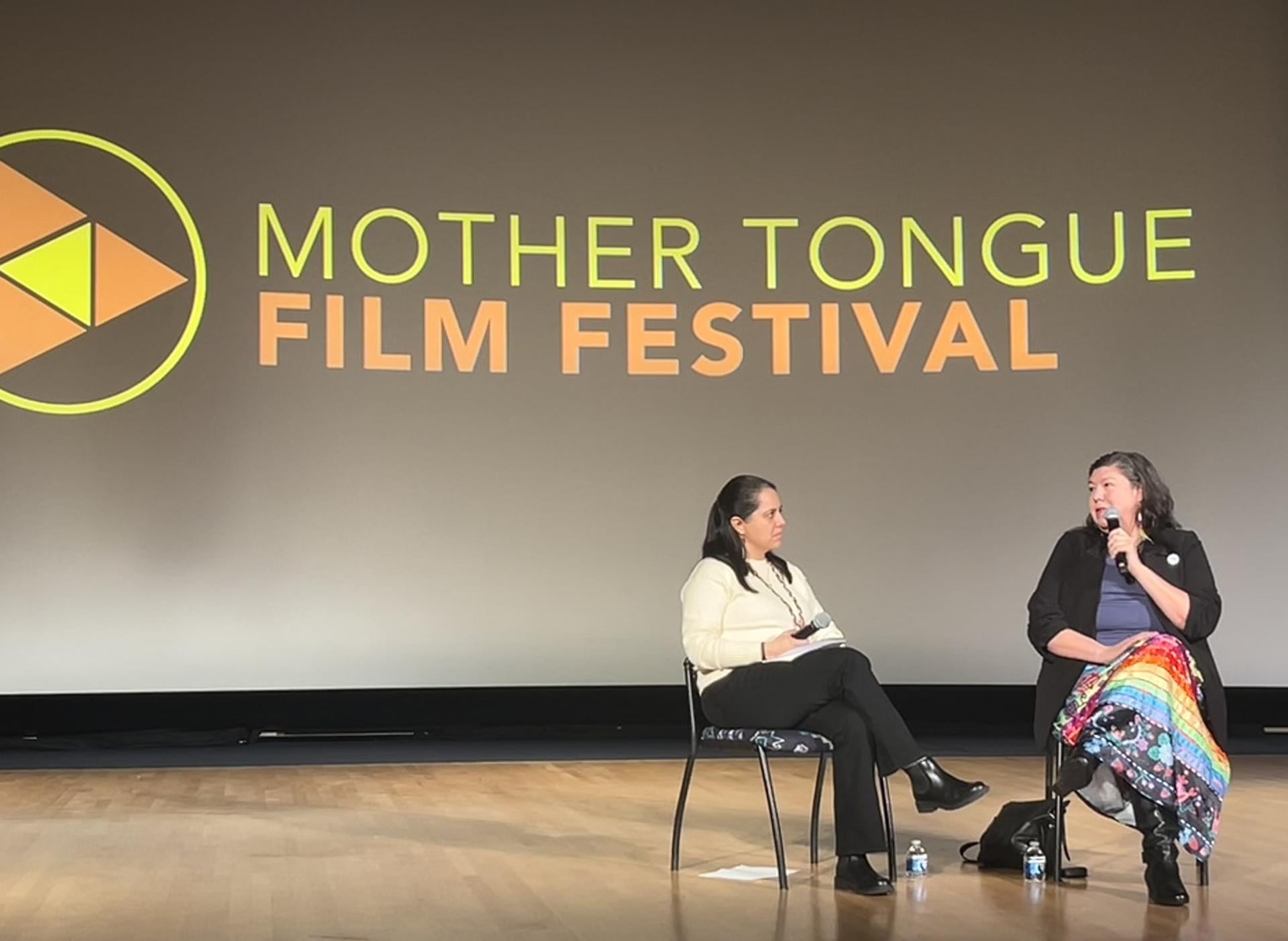
Tasha Hubbard (on the right) at the Opening Night screening of Singing Back The Buffalo for the Mother Tongue Film Festival at the National Museum of the American Indian in D.C. during the post-show Q&A with Smithsonian film curator and program manager Cindy Benitez. Photo by Cristina Veran.
CV: The Buffalo have long been a fascination of western, non-Indigenous historians, naturalists, preservationists, and the like. What did these self-anointed, often government-directed, authorities get wrong?
TH: Unfortunately, the stories of such men have always been amplified more than ours. I’m kind of hard on the early conservationist William Hornaday, for one. He paid so much attention to “the last of the Buffalo,” and yet he killed 29 of them himself, just to get “perfect” specimens to mount at the Smithsonian—which, by the way, I actually found not long ago, in a little museum in Montana. The prize in Hornaday’s collection—a massive bull—became the iconic image of the buffalo; one steeped in colonial masculinity as the presumed “leader of the herd.”
It wasn’t until I started spending time with herds myself, and my teacher would show me, that I learned real buffalo societies are matriarchal. It’s not those bulls but the wise old buffalo grandmothers, if you will, who lead.
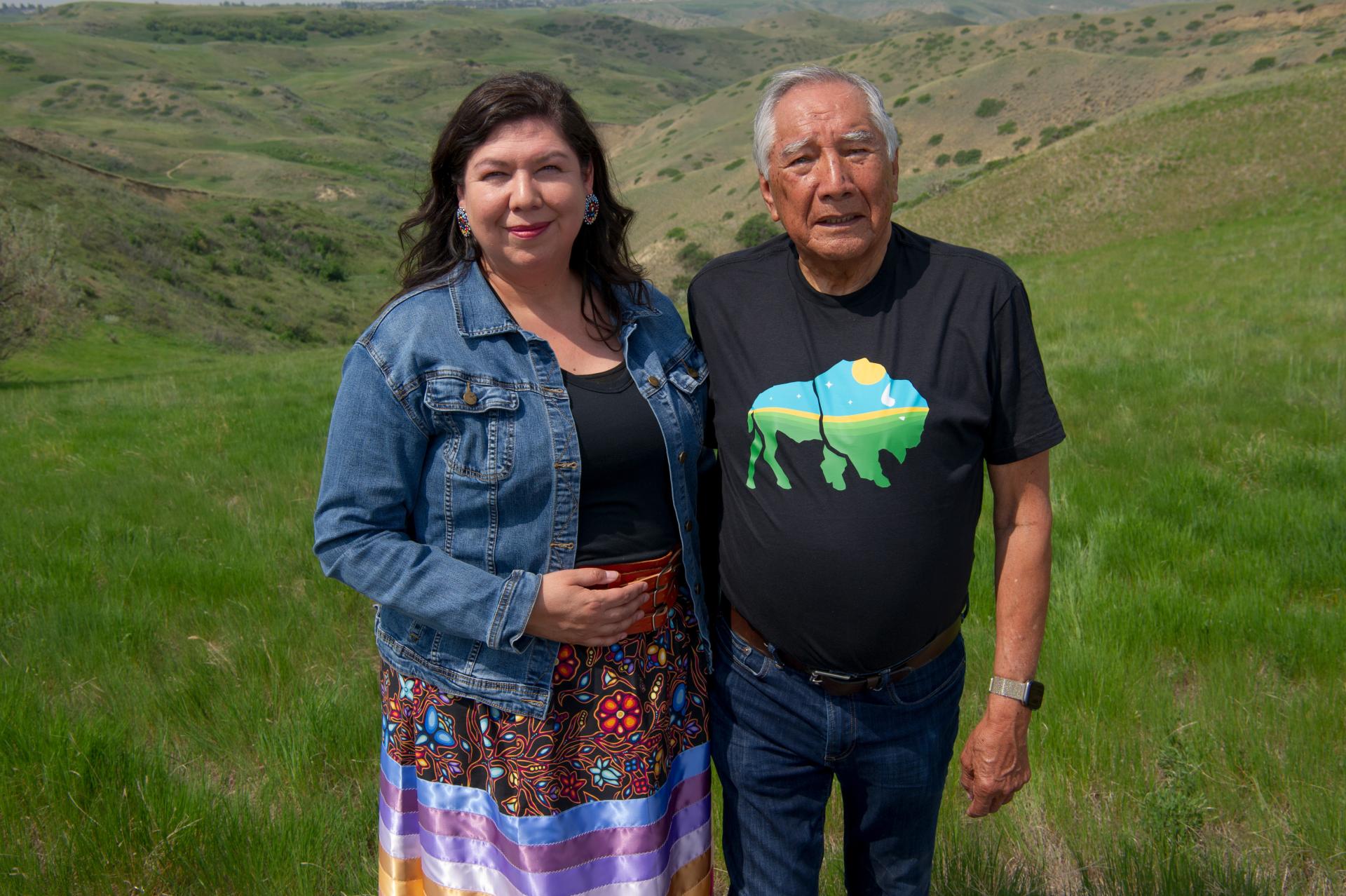
Tasha Hubbard and Elder Leroy Little Bear. Photo by George Hupka.
CV: I imagine this finds parallels in and with your own community.
TH: Yes, I came to see how the buffalo’s common experience is ours, too. Plains Indigenous peoples had these old women councils who would figure out what was needed for their communities. While it was (not entirely but mostly) men who would go out and hunt, as soon as they brought something back to the village, it belonged to the women. They were the ones to decide how to distribute things in such a way that we'd all be taken care of.
CV: At what point did you decide to devote your scholarly endeavors to this history?
TH: I had been doing a master’s degree in English, planning to focus on Indigenous literature. But I couldn’t stop thinking about buffalo, about what their disappearance had done to us. I shifted then, to bring this question into my academic work, because no one around me at the time was talking about it. This led me to eventually pursue a PhD at the University of Calgary, looking at the variety of Indigenous creative expressions centered around buffalo.
I looked at art by Indigenous artists, and read novels (from the 1910s-1930s) by Indigenous writers. I went out and gathered oral stories, visited sites, and organized the research thematically to produce not only my dissertation but also—thanks to encouragement from my department—the backbone of what would become "Singing Back the Buffalo." “Tasha,” they said, “you’ve already done the work!”
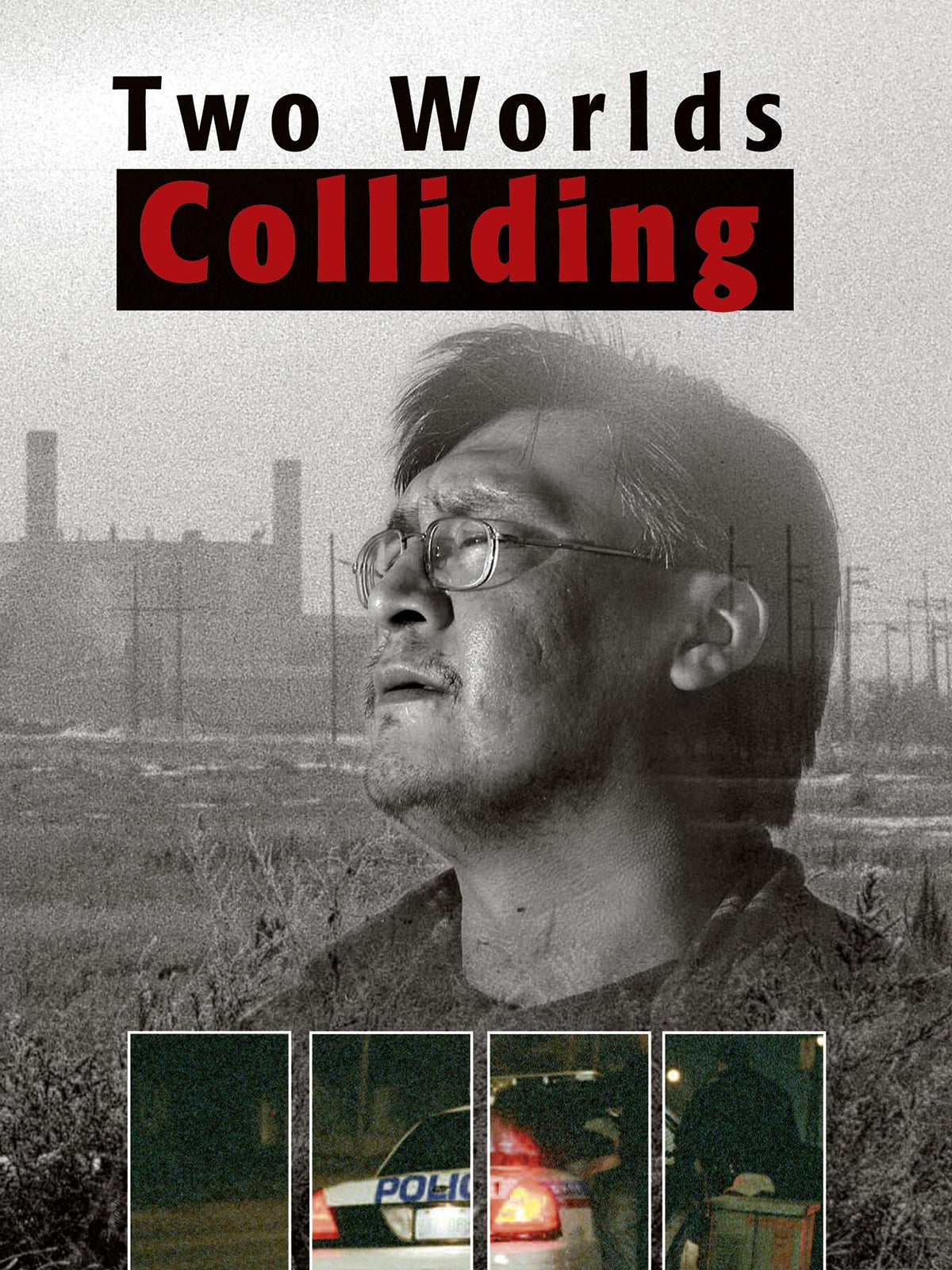
CV: By that time, you’d already established yourself as a filmmaker, having made some rather urgent, sobering documentaries — subjects you’re revisiting for some forthcoming projects.
TH: Yes, one—a fictionalized adaptation of my first documentary "Two Worlds Colliding" (2004)—was recently greenlit to be made as a series for a Canadian broadcaster. It’s based on that film’s story about Indigenous men in my home city of Saskatoon being grabbed by the police in the middle of winter, taken out of town, and left there outside to freeze. Two are found dead in the same week, and a third, who makes it back alive, becomes a witness to break the case open. It is revealed, eventually, to have been a historic practice of local law enforcement, which had led to the death of a 17-year-old boy ten years prior.
And I’m making my first dramatic feature now, as well; also an adaptation, based on the story of my 2017 documentary “Birth of a Family” about siblings who’d been separated as part of the so-called ‘60s Scoop* in Canada, and eventually find each other again in their 50s.
[*Note: The term “‘60s Scoop” refers to the era in which Canada’s child welfare policy directed authorities to “scoop,” that it to steal, more than 20,000 Indigenous children from their families, forcibly assigning them to foster homes, to eventually be adopted by white families in order to permanently disconnect them from their families, communities, and nations.]
CV: This theme has a deeply personal meaning for you.
TH: Yes, I myself was a ‘60s Scoop adoptee, raised by a non-Indigenous farming family in southern Saskatchewan. Lucky for me, they had a real sense of justice and did very much understand that, even as they cared for me, I also belonged to my nation, my people. My adoptive dad, who really understood the injustice happening to Indigenous Peoples, felt it was important that I didn't lose that sense of who I was.
With the support of my adoptive mom, when I was 14, I was able to find and reconnect with my birth family. I discovered that my biological father was a land-claims lawyer, and my biological mother was an activist and writer. And, I found that their community—my community of origin—talked a lot about the buffalo.
CV: By what process and criteria did you determine who this film's principal human subjects would be?
TH: I looked for committed and deep thinkers who’ve been doing this (buffalo centering) work for years—those who’ve not just talked about it, but lived it.
One whose journey really struck me was Jason Baldes (Eastern Shoshone.) After his father had tried for years to bring buffalo back to their community, Jason picked up the torch and that dream and made it his own.
There are Elders like Leroy Little Bear (Blackfoot) too, in their 70s and 80s. Even as they never thought they'd see the buffalo return in their lifetimes, they kept working toward that goal for the next generations. Such commitment is rare in a society that’s so obsessed with instant results.
Another central voice, Helen Augare Carlson (Ampsakapii Pikanii Blackfeet,) who I first met in 2016, speaks with real insight and care. Her husband tends to the herd that the Blackfeet received from Elk Island, and who now live a life less contained on their lands.
And it was important also to talk to the artists, the creatives. We need stories to invite the buffalo back into our imaginations, in our daily thoughts—that's where art and literature and creative expression comes in.
CV: It’s not often that a documentary filmmaker appears in their own film, as part of the story. What made you decide to share your personal experience of things, as they unfolded, alongside those you interviewed?
TH: I had been telling my exec producer this story, one I hadn’t shared in a long time, of how as a child I would often imagine the buffalo, and my ancestors along with them, in these hills—only to find out later that the hills I pictured were actually the homeland of my (birth) mother. And so my e.p. said to me,“Tasha, this story has to come through you; of you finding your way to who you are through the buffalo.”
Though I’ve never liked being in front of the camera, as the storytelling of this film evolved, it became clear that I needed to be in it myself. I ended up also including my son, who had been present at several key events in the film. We’d been spending all this time with Leroy, and you can see him, at the end of the film, saying to me and to my son, “You're witnessing these moments and, one day, someone's going to ask you about them. You need to remember all of it.” To grow up connected to the buffalo, that’s what we want for all Indigenous children—not only my son, with his buffalo scholar mom.
CV: The land itself comes across like a main character in this film. What do you most wish for audiences to feel from and understand about this sweeping, majestic setting?
TH: The goal was to invite them on a journey and, given that many people are unfamiliar with the beauty of our Indigenous lands, we spent a lot of time thinking about how to show this all on screen. The narrative I heard about them, growing up in Saskatchewan, insisted that these grasslands were just “empty space” that Canadians flew over, en route from Toronto to Vancouver. But I could always see the diversity of life here, particularly in the farmland to the south. Just because there aren’t lots of trees, I thought, that doesn’t mean there’s not plenty of other stuff going on.
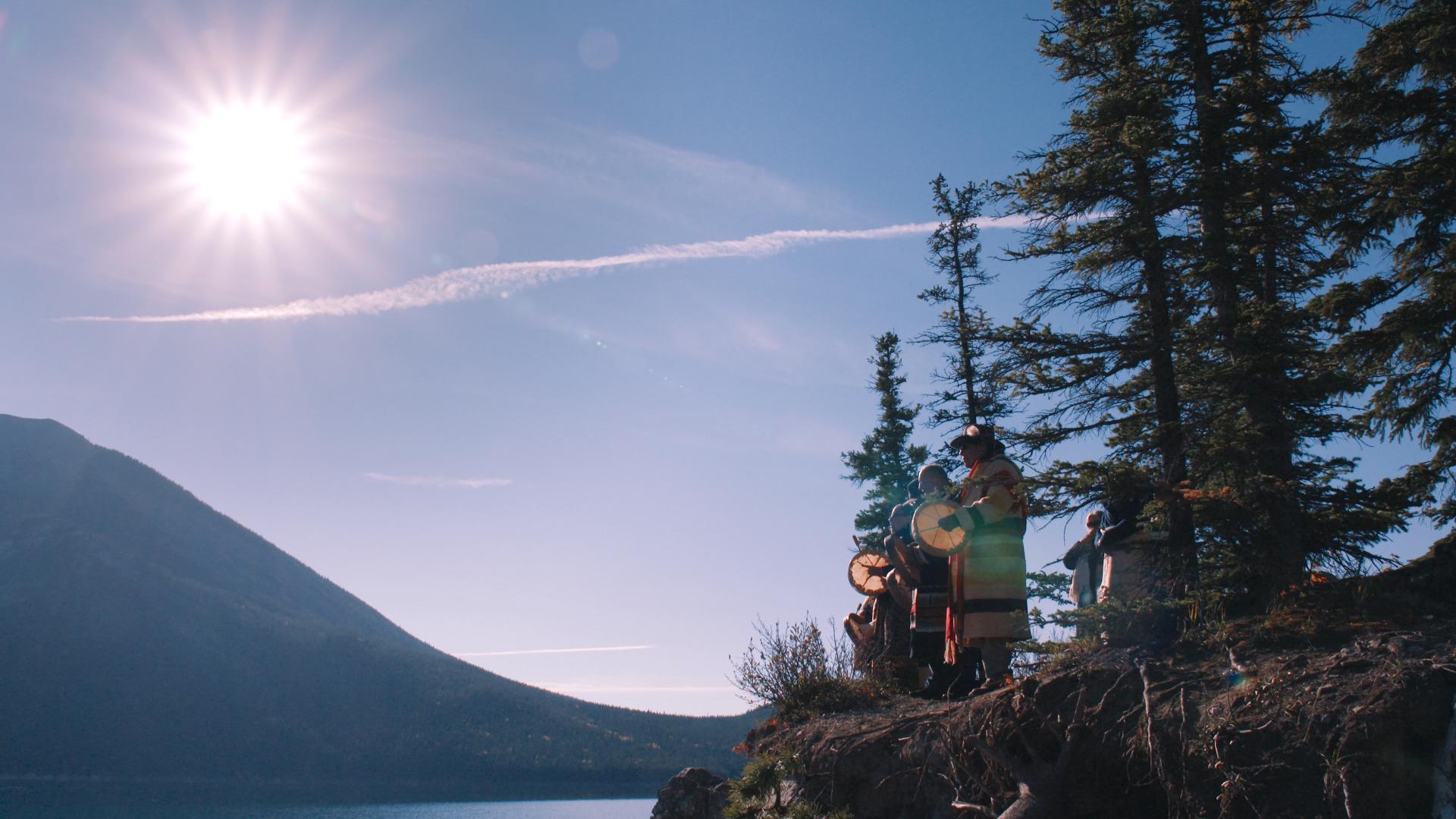
Production still from "Singing Back the Buffalo.” Photo by George Hupka.
CV: Given the sense of intimacy with the subject that comes through on screen, how was your team able to navigate the buffalo’s realm so immersively to film them like that?
TH: Well, we made sure to have the right camera lens, to make it look like we're much closer to the buffalo than we actually were most of the time. Otherwise, to get as close as we did during our visits, we got somebody to take us out to search for the wild herd in the grasslands, sometimes baiting them with alfalfa—it’s like candy to them.
CV: At what point, during the filming, could you begin to discern a kind of mutual trust being forged?
TH: There was this moment when the whole herd is there, just looking at us, like they’re deciding what to do. And we’re wondering, hmm, are they going to run away, or will they come toward us? Suddenly—and I could see the exact moment when—the buffalo cow realizes, “Ohh, this is where they feed us the ‘candy.’” She literally jumped for joy in the air and came running over to us, with the herd following behind, and they surrounded our ATV. Doing so, while bringing all their babies with them plus the old and vulnerable, meant that they 100% trusted that everything would be OK.
CV: There are, of course, the songs. Let’s talk about their pivotal role in this film’s story—for the buffalo and communities with whom they are in relationship.
TH: Songs are such an important part of this buffalo relationship; they need to be sung. The film title comes from a 2015 Indigenous gathering where each nation there sang each other’s buffalo songs. Though it was witnessed by only a few, it felt profound. “We’re singing them back!” I thought.
Many Nations have their own songs to honor the buffalo, each with its own meaning. Some are traditional, while others are more contemporary. Those that are more ceremonial and sacred are typically not to be shared with the public, and so any of those that were sung during the process of making the film did not appear on camera. Leroy’s Buffalo Treaty Song is his own story that he's able to sing publicly, so it became part of the film. And I was lucky that others, like the Blackfeet Singers (seen in the film’s early scenes from Banff), were OK with our including their song, too.
CV: "Singing Back the Buffalo" has been screening for quite diverse and international festival audiences—from Māoriland in Aotearoa/New Zealand, to Birrarangga in Australia. What do you make of the festival reception and audience response overall to it thus far?
TH: Filmmaking doesn’t end with the final edit. We’ve got to build our audience, typically at festivals, and with programmers that understand and appreciate how we as Indigenous filmmakers tell stories. Those where the programming teams are, for the most part, Indigenous place much more value on the way in which we tell our stories, understanding that sometimes our films aren’t going to follow mainstream conventions; that we may subvert, shift, or even ignore them entirely in order to make films grounded in our own ways of storytelling.
When I’m teaching, I can’t go to all of the festivals, and so producer Jason Ryle (former Executive Director of ImagineNative) has also represented the film abroad.
Some of our greatest audience experiences with this film have been with children. We get all these messages from parents who are surprised that their little kids are actually able to sit still and watch all 98 minutes of it. Then, as they leave the theatre, they’ll say, “Mommy, daddy, I love the buffalo!” That kind of impact keeps me going.
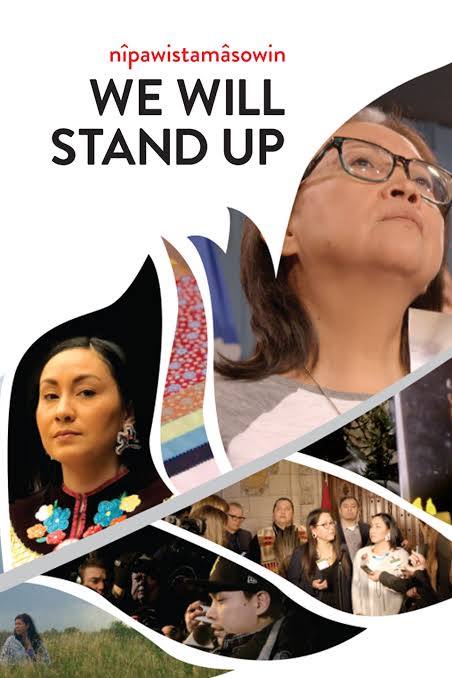
CV: You’ve said that your family had wanted you to become a lawyer—which did not come to pass. Even so, your filmmaking has helped bring important legal cases to light. How would you describe your approach to this?
TH: I present cases, you could say, but in a way that's story-based. People also need to understand how they are rooted in the impacts of colonization, since most of us didn't get that in our education. With “We Will Stand Up”—my film about what happened to Colten Boushie and the trial of (the man who shot and killed him, but was acquitted of murder,) Gerald Stanley—I included an animated 6-minute history lesson. The clip lives on its own now, online, and is probably the most-watched thing I've ever made.
CV: And finally, given how a quest for justice is a strong throughline in your work, how do you define it—especially for the buffalo?
TH: True justice is rooted in respect; respect for our people, our knowledge, our ways of being, our freedom. As to what this would look like for the buffalo, the answer is clear: the right to live as they are.
--Cristina Verán is an international Indigenous Peoples-focused specialist researcher, educator, advocacy strategist, network weaver, editor, and mediamaker. She was a founding member of the United Nations Indigenous Media Network and the Indigenous Language Caucus. As adjunct faculty at New York University's Tisch School of the Arts, she brings emphasis to the global histories, expressions, and socio-political impacts of Indigenous popular culture(s) alongside contemporary visual and performing arts. She is originally from Peru.
Top photo: Behind the scenes during the filming of “Singing Back the Buffalo." Photo by George Hupka.



